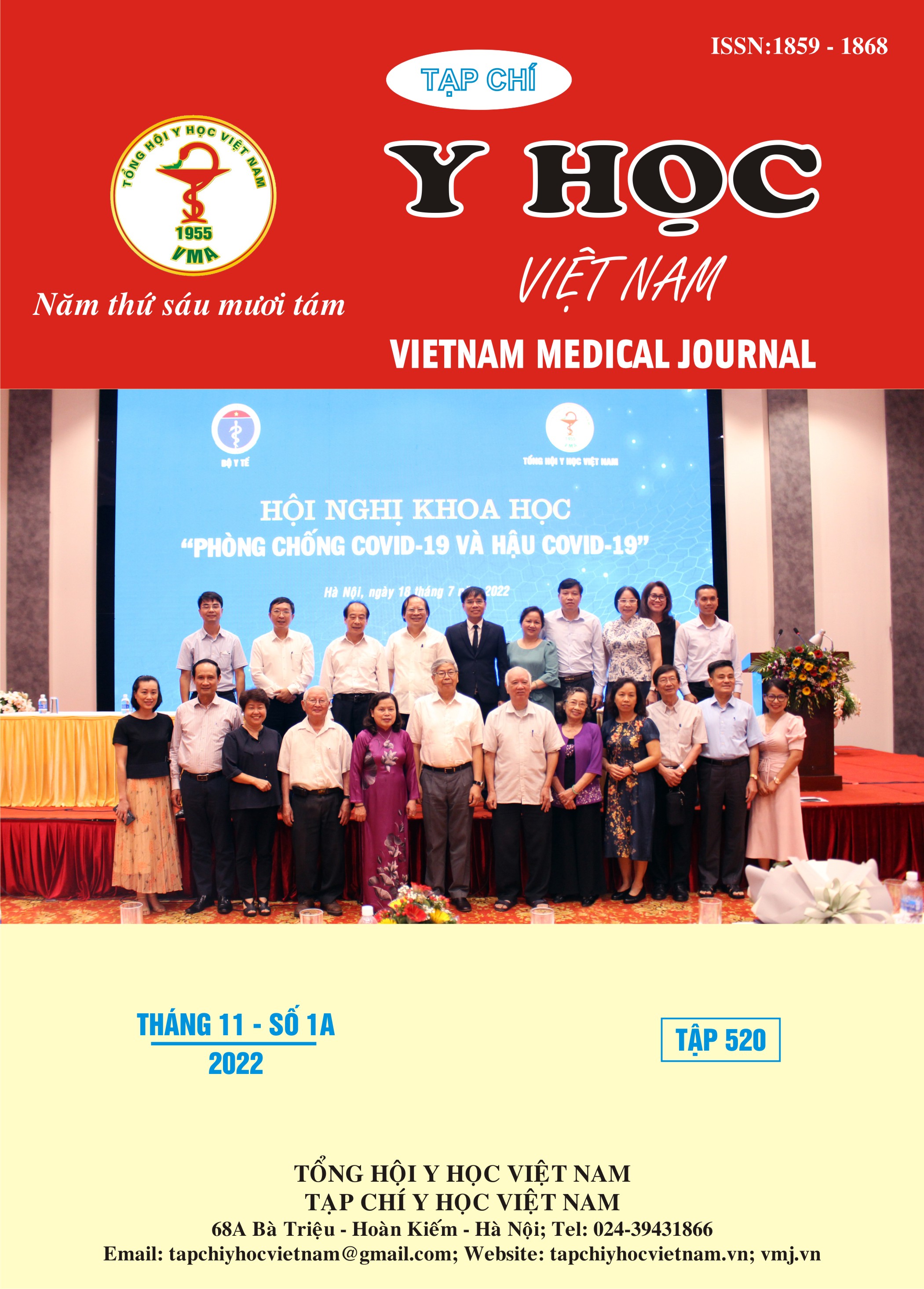ASSESSMENT OF THE EFFECTIVE TREATMENT OF POSTPARTUM IRON DEFICIENCY ANEMIA IN WOMEN WITH IRON DEFICIENCY ANEMIA DURING PREGNANCY AT HUNG VUONG HOSPITAL
Main Article Content
Abstract
Background: Iron deficiency anemia during pregnancy is the strongest predictor of postpartum anemia, which can have long-term effects on maternal and infant health. Oral iron supplementation is a simple and effective method to improve the status of iron deficiency anemia postpartum women. Objective: Determine the success rate in the treatment of iron deficiency anemia in the postpartum after one month of treatment at Hung Vuong hospital from January to June 2022. Methods: Pseudo-experimental study in the form of a before-after treatment study, conducted on 88 pregnant women with antenatal anemia not due to genetic diseases born, and iron deficiency anemia within 48g of birth at Hung Vuong hospital from January to June 2022. Results: The success rate in the treatment of iron-deficiency anemia in the postpartum period after one month of treatment was 88.6% (95% CI: 79.9-93.9). The clinical forms of iron deficiency anemia in the postpartum period in pregnant women with antenatal anemia participating in the study were: mild anemia 21.6% (95% CI: 14.1– 31,6); moderate anemia 78.4% (95% CI: 68.4 – 85.9). Factors related to the success rate of iron deficiency anemia treatment in the postpartum period: maternal age, education level, weight gain during pregnancy, postpartum blood transfusion, birth interval, number of births, postpartum Hb index within 48 hours, number of days of postpartum iron supplementation… Conclusions: Oral iron supplementation is highly effective in treating iron deficiency anemia in the postpartum period. It is recommended to perform routine hemoglobin test and serum ferritin determination after childbirth for pregnant women with antenatal anemia in order to provide iron for timely and appropriate treatment for pregnant women..
Article Details
Keywords
Iron-deficiency anemia, Postpartum, Hemoglobin, ferritin
References
2. Đặng Thị Hà. Tầm soát thiếu máu thiếu sắt trong thai kỳ tại thành phố Hồ Chí Minh. Luận án tiến sĩ y học. Đại học Y Dược TPHCM. 2000:35-85.
3. Trần Văn Vũ, Võ Minh Tuấn. Tỷ lệ thiếu máu thiếu sắt ở phụ nữ mang thai 3 tháng đầu tại bệnh viện đa khoa tỉnh Bình Thuận. Tạp chí Y học thành phố Hồ Chí Minh. 2019;23(2):56-61.
4. Tăng Thường Bản, Nguyễn Duy Tài. Đánh giá hiệu quả điều trị thiếu máu thiếu sắt trong thai kỳ tại bệnh viện Hùng Vương TP. Hồ Chí Minh. Tạp chí Y học thành phố Hồ Chí Minh. 2015;19(1):79-86.
5. Pavord S, Daru J, Prasannan N et al. UK guidelines on the management of iron deficiency in pregnancy. British Journal of Haematology. 2020;188:819–830.
6. Robson LS, Shannon HS, Goldenhar LM, Hale RA. Quasi-experimental and experimental designs: more powerful evaluation designs. Institute for Work & Health. 2001;Chapter 4:29-42
7. WHO. Iron deficiency anaemia; assessment; prevention; and control. A guide for programme managers. Geneva, World Health Organization. 2001:33 – 56.
8. WHO. Guideline: Iron Supplementation in pospartum women. Geneva, World Health Organization. 2016.


